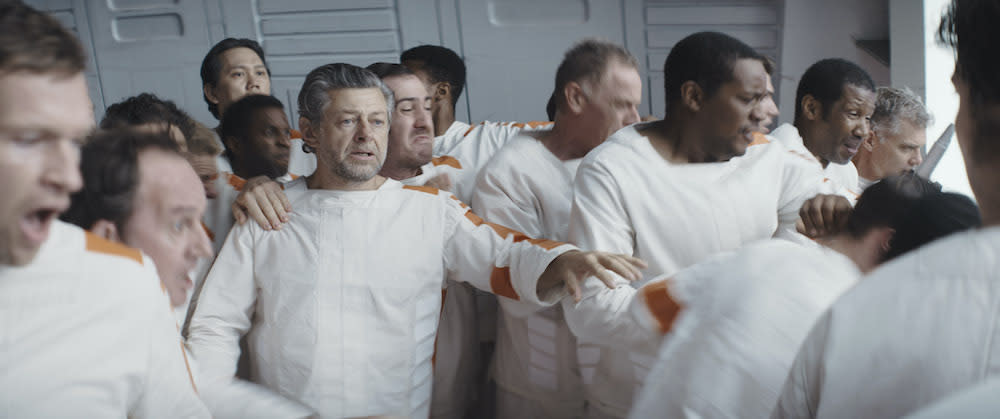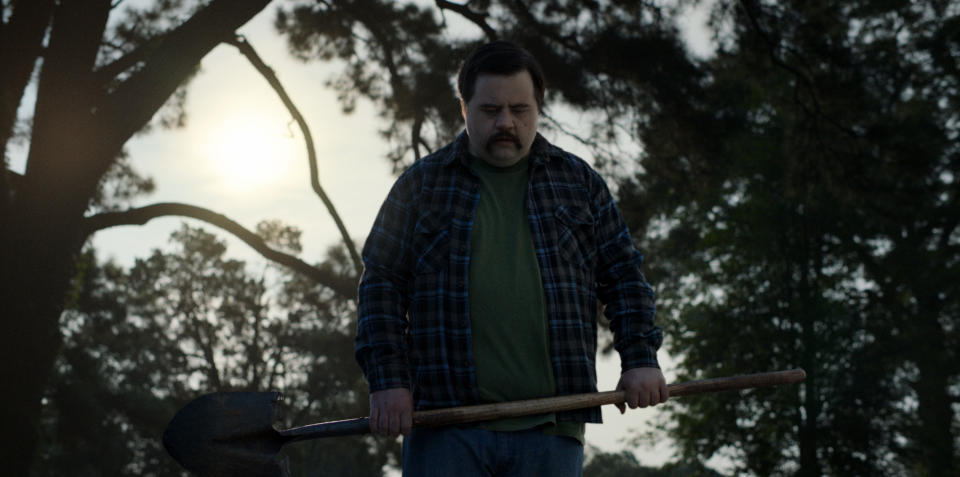4 Dark Horse Directors Who Deserve DGA Award Nominations

- Oops!Something went wrong.Please try again later.
- Oops!Something went wrong.Please try again later.
- Oops!Something went wrong.Please try again later.
- Oops!Something went wrong.Please try again later.
The 75th annual Directors Guild of America Awards will announce nominations for the television categories Tuesday, January 10. Voting opened December 9 and runs through Friday, January 6. Awards will be given out Saturday, February 18 at the Beverly Hilton Hotel in Los Angeles, CA. For more on the film ceremony, head to IndieWire’s Awards Calendar.
With DGA voting underway, clear frontrunners emerge. There are past nominees whose work on ongoing series merits recognition once more, like Bill Hader with “Barry,” Lucia Aniello for “Hacks,” or Donald Glover with “Atlanta” (plus Hiro Murai, for that matter). Then there are directors whose most recent work on new programs has already been honored elsewhere and is likely to be honored again at the DGAs. (Ben Stiller’s direction of “Severance” feels undeniable, especially after the show’s Emmy run.) Popular series like “Abbott Elementary” and “The Bear” will likely earn deserved nominations, as well, but there are more names to consider — names that don’t have a clear peg for awards consideration, whether that’s because their show has been running for years, or it’s a genre series not often considered, or they’re simply flying under the radar because there’s so much TV. Four of those names are below, and while there are plenty more, here’s hoping voters make the time to consider these deserving contenders.
More from IndieWire
1. “What We Do in the Shadows” – Yana Gorskaya (Comedy Series)
Yana Gorskaya made her “What We Do in the Shadows” debut with one of the best sitcom episodes of all-time — 2020’s Jackie Daytona classic, officially titled “On the Run” — and she hasn’t looked back. In 2021, she helmed more than half of the third season, including “The Casino” and the finale, “The Portrait.” Then she followed up her efforts with the Season 4 premiere, “Reunited,” and the standout entry, “Go Flip Yourself.”
In the spoof/homage to reality remodeling shows, everyone’s favorite Staten Island vampires are paid a surprise visit by Laszlo’s favorite TV hosts: twin brothers Bran and Toby Daltry (played by Randy and Jason Sklar). Much of the episode takes the shape of something you’d see on HGTV, as Laszlo (Matt Berry), Nadja (Natasia Demetriou), Nandor (Kayvan Novak), and Guillermo (Harvey Guillen) pretend to be common homeowners for “Go Flip Yourself!,” and the brothers pitch their vision of a bright and shiny vampire lair. (Perhaps you can sense why problems emerge.)
A feat of imagination and production design coming together, Gorskaya shines not only in her flexibility — silly onscreen graphics and plenty of montages make this feel like a real renovation show — but also how she blends the traditional mockumentary style of “WWDITS” with this new format. There’s still room for telling cutaways and direct-to-camera addresses within “Go Flip Yourself!,” which never feels separate from the ongoing series as much as a brilliant re-calibration of its exquisite storytelling engine.
2. “Andor” – Toby Haynes (Drama Series)
It’s hard to say it better than IndieWire’s Sarah Shachatt did in her interview with Toby Haynes and analysis of “Andor’s” direction:
The last three episodes of “Andor” featured a prison without bars, but part of both the thrill and the pathos of the latest “Star Wars” series is that Cassian Andor (Diego Luna) has felt like a captive of the Empire the entire time. Everyone in “Andor” is trapped, often visually through the sculpted, strong lines of Luke Hull’s incredible production design, and always through the eye of the camera, helmed in the first three episodes and Episodes 8 through 10 by director Toby Haynes.
From tight framings and jump cuts that build tension within a conversational conflict to wide shots that expand and unveil unexpected layers across planetary landscapes (and space itself), “Andor” is a meticulously directed gem, consistently using its rich visuals to better define the series’ rebellious themes. Haynes and his team of directors, Susanna White and Benjamin Caron, work with production and set designers to build delineated cages for their oppressed heroes and never-ending corridors, work stations, and supplies for their towering antagonists. The Empire’s size and influence is feared not only because of its powerful leaders, but because those punishing forces can be felt — from the telling compositions to the tangible prop work. Using showrunner Tony Gilroy’s work in “Rogue One” as a template, Haynes built the first “Star Wars” series worthy of the franchise’s visionary roots.

Apple TV+
3. “Black Bird” – Jim McKay (Limited Series)
Based on a true story first chronicled in James Keene’s autobiographical book, “In With the Devil,” “Black Bird” sets itself the unenviable task of following two dastardly men. The main character, Jimmy Keene (played by Taron Egerton), is a more socially acceptable “bad” guy; a former football star with good looks and charisma to match, he’s pinched for dealing drugs in central Illinois. In order to shorten his sentence, Jimmy is offered the chance to get a confession or corroborating evidence out of an unquestionably bad guy: Larry Hall (Paul Walter Hauser), a convicted serial killer with a minimum of 14 murdered women to his name. Still, Larry might get out if Jimmy can’t pin a few killings on him, and to do that, he’s going to have to get uncomfortably close with the soft-spoken, wild-eyed killer.
Throughout “Black Bird,” each of its three directors — Michaël R. Roskam, Joe Chappelle, and Jim McKay — find telling connections between our two leads. As much as Jimmy wants to push Larry away — to put him in another category of human being, completely distinct from his own status — it becomes clearer and clearer the two men aren’t that far removed from each other. McKay’s episode, “WhatsHerName,” makes the parallels clear, as the story flashes back to Larry’s disturbing upbringing with his brother and Jimmy makes connections of his own while reflecting on his past relationships.
Such an episode can be a trap; the flashbacks can throw off the present story’s natural rhythm, and characters coming to realizations after the audience does can lend those scenes an obviousness that borders on redundancy. But McKay, working from a script by showrunner Dennis Lehane, balances each development with grace and treats each revelation with a similar composure. As Jimmy and Larry talk, as they think, as they remember and they recognize, each scene lets the facts build on each other, the performances speak for themselves, and the transitions smoothly connect everything together. It’s not a showy episode, but it’s an essential one to understand and appreciate “Black Bird’s” broader points about the deep roots of American misogyny. McKay’s deft handling of each piece — along with the series’ consistent sharpness from frame to frame (there’s such great work with shadows) — is worth watching again and again.
4. “Bad Sisters” – Dearbhla Walsh (Drama Series)
In a year filled with movies and shows that capture the glistening beauty of Ireland — from “The Banshees of Inisherin” to “Derry Girls” — Sharon Horgan’s black comic murder-mystery still stood out, and Dearbhla Walsh is a key reason why. Already a 10-time Irish Film and Television Award nominee (and three-time winner), Walsh directed the first three episodes of Apple TV+’s “Bad Sisters,” setting the tricky tone for her successors and maximizing the oft-visited venues (and vistas) to boot. With multiple timelines to juggle and a stacked ensemble to introduce, Walsh works with precision and patience; slight camera movements and careful positioning reveal key character traits, clues are doled out with similarly astute maneuvers, and then there’s the seaside. The sense of place is strong from the outset, but the Garvey sisters’ trips to their swimming spot (“The Forty Foot”) help ground a story that could’ve gone off the rails at any moment. Throw in excellent performances from the cast, and there’s nothing Walsh couldn’t handle in this sneakily impressive production. “Bad Sisters” moves with confidence and conviction, but those are earned traits, not inherited ones.
Best of IndieWire
Sign up for Indiewire's Newsletter. For the latest news, follow us on Facebook, Twitter, and Instagram.

